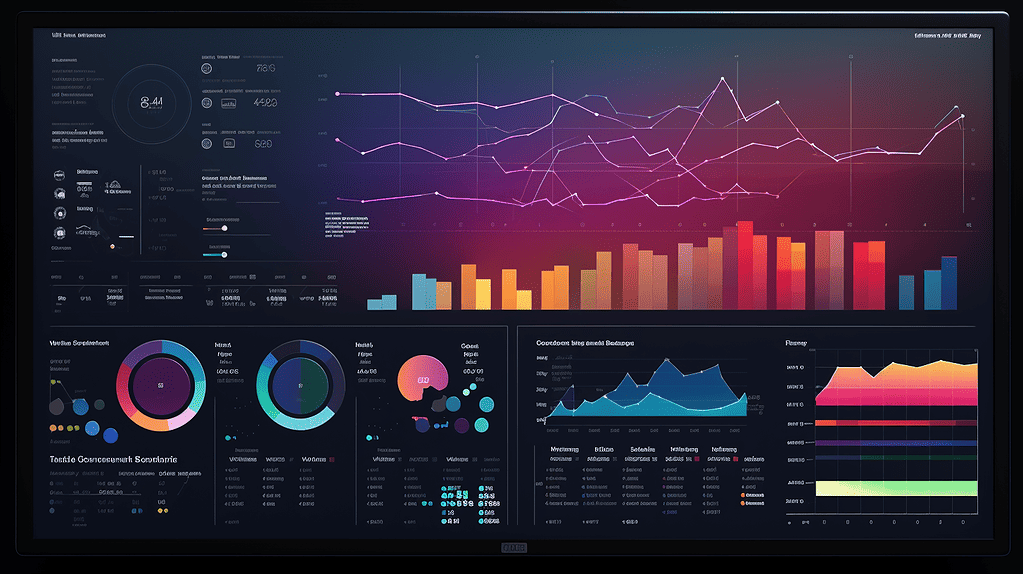Uncertain times can really shake things up for nonprofit organizations. Your organization must be prepared to deal with challenges like reduced funding and greater demand for services. It can also be tough to keep your community involved when everyone is facing their own challenges. Planning for the shifting landscape is tricky. Your website needs to adapt to the flow of change to stay current and continue to meet the needs of your community effectively. It’s crucial to clearly understand how to pivot your nonprofit website in uncertain times.
Assess Your Current Website
You can’t prepare for potential uncertainty if you don’t know what you’re dealing with from the beginning. Assess your current nonprofit website’s function to prepare for anything uncertain times may bring. Look at how things are functioning right now to help you understand its strengths, weaknesses, and areas for improvement.
Review Analytics
Check metrics such as website traffic, page views, and conversion rates. These numbers hold valuable insights into user behavior, popular content, and areas that may need improvement. Feedback from actual users can help identify pain points.

Audit Content
Take some time to closely review the downloadable files, media, and text on your nonprofit website and consider their quality and relevance. Are they engaging and compelling enough to capture your audience’s attention?
It will serve you well to ensure that everything aligns with your organization’s goals and effectively communicates your mission.
Your content should tell a cohesive story and inspire visitors to take action or support your cause.
Make sure your content is on point, resonates with your audience, and truly represents the amazing work your nonprofit is doing.
Recognize Vulnerabilities
Keep an eye on security by regularly checking for potential vulnerabilities in your website’s software and configurations.
It’s also crucial to listen to user feedback and address any difficulties or confusion they encounter.
Remember to back up your data regularly to safeguard against security breaches or data loss.
Updating your website with software and plugin updates is another critical measure to patch security vulnerabilities.
Monitoring website traffic for any unusual patterns can help you detect potential security threats.
Educating your team on website security best practices and regularly reviewing and testing forms on your website will further strengthen security.
Implementing SSL certificates can encrypt data transmission, protecting sensitive information.
And if needed, don’t hesitate to seek expert help from web developers or security consultants.
By following these steps, you’ll be better equipped to recognize and address vulnerabilities, ensuring the security of your nonprofit website.
Identify Areas of Improvement
Listen to feedback from your community. They often provide valuable insights and suggestions for improvement.
Conduct usability testing to see how users interact with your website and identify areas where they are confused or frustrated.
Ensure your website is mobile-friendly and visually appealing, aligning with your organization’s brand.
Improving website speed and streamlining the conversion process will also enhance the user experience.
Stay current with industry trends and seek external feedback to gain fresh perspectives.
Assessing your nonprofit website using these steps allows you to identify areas for improvement and develop a plan to enhance its overall effectiveness. User feedback and usability testing provide valuable insights, while website analytics offer quantitative data on engagement and evaluating content relevance to ensure a cohesive and impactful user experience. With a comprehensive plan in place, you can optimize your nonprofit website to bring your organization greater impact and engagement.
How to Pivot Your Nonprofit Website
Pivoting your nonprofit website during uncertain times requires swift adaptability. But there are some things you can do in advance to prepare your site and create a buffer to respond to major unexpected changes.
Clarify Your Goals
Clarifying your goals is like having a compass to navigate the changing digital landscape. Taking the time to reassess your goals will give you a clear understanding of what you want to achieve and how your website needs to adapt to support those objectives. Prioritize what’s essential and make informed decisions about your website’s direction. Communicate a focused message to your community, keeping them engaged. Clear goals give you a roadmap to measure success and track progress as you make site changes.
Understand Audience Needs
Gaining insights into your community’s concerns, challenges, and priorities allows you to make informed decisions about necessary changes.
Tailoring your messaging to address their specific needs helps build trust and engagement.
Adapting your services based on their feedback and changing circumstances ensures you meet their evolving needs.
Improve the user experience by optimizing website layout, navigation, and functionality to enhance their browsing experience.
Customizing your offerings to better align with their preferences increases relevance and engagement.
Gathering feedback allows you to refine your approach and make ongoing adjustments to serve your community better.
Update Content
Updating your content allows you to address current challenges by providing timely and relevant information to your community. You can communicate changes, express sensitivity, and highlight virtual offerings. Sharing success stories showcases the impact of your work and instills hope. Optimizing your content for search engines will improve your organization’s visibility, broadening the reach of your mission.

Optimize User Experience
Create a seamless and user-friendly browsing experience that keeps your community engaged. Prioritizing user experience will ensure that your nonprofit website provides easy access to information. Adapting to changing user behaviors and staying informed about emerging trends enables you to continuously improve and meet the evolving needs of your community.
Implement Responsive Design
Make sure your website looks and works great, no matter what device your visitors use. Whether they’re on a desktop, laptop, tablet, or smartphone, responsive design automatically adjusts your site’s layout and content to fit their screen perfectly. This design approach means everyone gets a seamless and user-friendly experience, which keeps them engaged and eager to explore. Plus, search engines love mobile-friendly sites, so the responsive design can give you a boost in visibility and help more people find your organization.
With so many people relying on their mobile devices, responsive design is a must-have for adapting to changing user behavior and reaching a wider community. It also simplifies your life by streamlining maintenance and making content updates a breeze.
Have a Maintenance and Care Plan
With a dedicated care plan in place, you ensure continuous functionality by keeping your website updated, minimizing technical issues, and swiftly adapting to changes. You’re prepared to adapt quickly and make necessary updates when unexpected changes pop up. You’ll be able to address any technical challenges that come your way so your website stays up and running without a hitch.
Leveraging Your Website in Uncertain Times
In uncertain times, your organization’s website becomes a powerful ally, supporting your mission and helping you navigate the challenges ahead. It is a hub of information and communication, keeping your community connected and informed. Below are some ways to leverage your nonprofit website and other communications tools during uncertain times.
Explore Virtual Fundraising Options
Host virtual events and activities on your website to help you diversify your revenue streams and extend your reach to a broader audience.
Think about hosting online auctions, live streams, or virtual galas that people can participate in from anywhere. Make it convenient for your community to contribute and get involved.
Virtual fundraising opens up a whole new world of creativity and engagement. You can create personalized fundraising pages, share captivating stories through videos and testimonials, and keep everyone in the loop about the impact of their contributions. You can also integrate social media with your website, amplifying your message and attracting even more support.
Establish Consistent Connection with Email Marketing
Sending newsletters, organization updates, and curated content through emails helps you stay connected and build a sense of community. Including links to your website in your emails can drive traffic and encourage your community to explore your online space, learn more about your mission, and get involved. Personalizing your emails adds that special touch, making your supporters feel valued and appreciated. Email marketing becomes a powerful tool to promote your initiatives, share inspiring stories, and provide convenient ways for people to donate.
Use Social Media for Increased Engagement
Platforms like Facebook, Twitter, Instagram, and LinkedIn offer a wide reach and the opportunity to share compelling content, updates, and inspiring stories that resonate with your community.
Creating a two-way conversation, responding to comments, and actively engaging with your followers can help your organization build community and trust.
The power of social media lies in its ability to amplify your message. When your followers engage with your content, they have the potential to share it with their networks, creating a ripple effect that drives traffic to your website.
User-generated content allows you to tap into the power of your communities’ personal stories and experiences. Social media also serves as a real-time platform for timely updates and addressing concerns.
Convert Experiences and Resources to Digital Formats
Bring the best of what you offer into the online world and make it accessible to a broader community. Digitizing your experiences and events means reaching people regardless of location or physical limitations.
Virtual engagement allows you to continue providing valuable content through webinars, online courses, and live streams. Adapt and find creative ways to connect with your community.
You can repurpose existing content and breathe new life into it by transforming your resources into digital formats. Manuals, guides, and printed materials can become interactive e-books, downloadable PDFs, or multimedia resources. This approach extends their reach and ensures they remain relevant in an increasingly digital world. Going digital also offers scalability and cost-effectiveness.
Once you’ve created the digital versions of your experiences and resources, you can replicate and distribute them to a larger audience without incurring additional production or printing costs. You can incorporate interactive elements, gather user feedback, and create a more immersive experience for your audience.
Build Strategic Partnerships
Building strategic partnerships is like teaming up with superheroes who share your mission and values, multiplying your impact and reach.
Join forces with like-minded organizations or individuals to make a bigger splash in the online world. Combine your resources, skills, and communities to tackle social issues from different angles.
Teaming up means you can shout your message from the rooftops or, more specifically, from each other’s websites and social media platforms.
Collaborating on campaigns, creating joint content, and featuring one another introduces your organization to new audiences who may become your biggest fans.
When you partner with respected organizations or influential people, their endorsement and support add credibility to your cause. Bringing together diverse perspectives, expertise, and ideas can help you develop groundbreaking initiatives, programs, or campaigns that address social issues uniquely and effectively.
Think Outside of the Box
Tap into your creative side and explore new possibilities to make a meaningful impact. You may discover innovative solutions that adapt to the changing landscape if you break away from conventional approaches. Let your creativity guide you, challenge the status quo, and discover fresh ways to leverage your nonprofit website for maximum impact.

Monitor Metrics for Insights
Metrics are breadcrumbs that lead you to a better understanding of your website’s performance and user behavior. These numbers tell a story and provide clues about what’s working and what needs improvement.
For example, a high bounce rate on certain pages is a sign that something might be turning visitors away. Time to roll up your sleeves and dig deeper to figure out how to make those pages more engaging and relevant.
Conversely, if you spot a campaign or content piece with stellar conversion rates, it’s a signal to double down on those strategies and make them shine even brighter.
It’s all about finding what resonates with your community and optimizing your website to deliver the best user experience.
Monitoring metrics helps you track the success of your initiatives and make tweaks along the way. Comparing metrics before and after making changes will show you the impact of your efforts.
During uncertain times, your nonprofit website becomes a dynamic platform that enables you to reach a wider audience, adapt your services, and gather valuable feedback. It becomes a virtual space where you can showcase your impact, inspire support, and foster a sense of community. With your website as a strategic tool, you can confidently navigate uncertain times, staying resilient and making a meaningful difference in the lives of others.
Let CauseLabs Help Keep You Prepared
In uncertain times, maintaining an agile nonprofit website is essential for success. By implementing these tips, such as regularly updating your content, optimizing for mobile, ensuring website security, leveraging analytics, encouraging user feedback, and staying adaptable, you can leverage your website as a powerful tool to navigate challenges and amplify your organization’s impact. Remember to think outside the box, explore virtual fundraising options, utilize social media for engagement, convert experiences to digital formats, and establish strategic partnerships. By doing so, you can create a dynamic and responsive online presence that connects with your audience, drives engagement, and supports your nonprofit’s mission.
Set up a plan of action with CauseLabs so your organization can stay agile, stay connected, and make the most of your nonprofit website in uncertain times and beyond. Contact us today.

